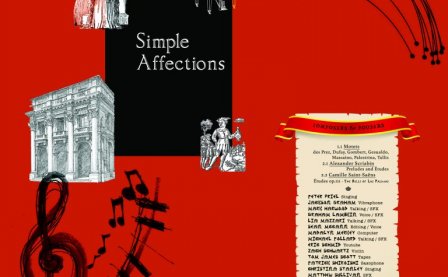Madalyn Merkey describing the scene of Scent’s encoding to The Wire: “On one side of the screen is the darkened, unseen process; on the other side is the light of the generative substance. It’s impossible to observe the inner workings from the outside.”
What does she say to her machines, alone in the Art Institute? What sounds, what words, are sequestered in those boxes?
Let’s say she smiles to herself. She breathes calmly, and each intake of breath makes a sound, different from the sound made by the breath leaving. Her synth begins to swell, breathing in, breathing out sound.
Shielding the microphone with one hand, she whispers into the vocoder. Out comes sound: “am sha” “am sha.” I’m shy, I’m shy? The synth swathes the signal. The ideal of the voice is to become the word — pure information, unencumbered by subjectivity, universal, free from the echoes of the space of speaking. But words, once written, can be stolen, their meanings torn away from the intended recipient. What battle is she in, such that her words need to be buried?
The vocoder seems to dissolve the voice into noise, but it’s actually encoding the word, breaking it into channels for encrypted transmission. Long before its use in popular music, the vocoder was adopted by the Pentagon during World War II to lock away the human voice behind unintelligible noise — noise that could be opened and closed like a locked room.
Alone with her vocoder, she’s not really alone. The vocoder works by splitting the sound of her voice into frequency bands, processing them into simple signals suitable for encrypted transmission. The signal stays locked away, lying in ribbons at the bottom of the boxes, much as the unconscious protects us. The room becomes filled with pieces of her lacerated words, locked away, cuttings from lives not lived, hesitations abandoned.
She listens much more than she speaks. She tries again, selecting her own society of modular tubes — relationships tangled, wires crossed, communication lost. Connection ripped out by the fistful. The channels open up: “I don’t want to hurt you,” but no one else is there. The signal stays in the room. All of the sounds not locked away she labels “Scent,” but that’s another locked box.
The back cover of Scent depicts Merkey with one hand on a clutch of dangling patch cables and the other hand tickling a potted orchid. That’s her. Just another patch cord. The scent is the protected signal. What we hear is the medium, the air, the held breath.
There are no organs physiologically devoted to speech. To speak, our equipment of respiration and digestion are conscripted into the service of the word; first using a complex of digestive organs (lips, mouth, palate, tongue, teeth), and second using respiratory apparatuses (larynx, nasal cavaties, lungs, diaphragm). Breathing, tasting, smelling, speaking, “scent,” “sent” — these are not distinctions for the ear without a key.
Her finger hovers over the “send” button, but in the end decides against it. Maybe she pockets the key to the locked box, maybe she never had one. In any case, the signal can never be misread, because it was never sent.
More about: Madalyn Merkey




